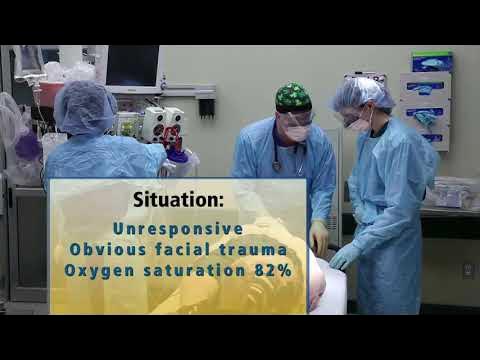General Trauma ,Management of Polytrauma Patients - Everything You Need To Know - Dr. Nabil Ebraheim
Summary
TLDRThis video script covers the comprehensive management of polytrauma patients, emphasizing emergency procedures like pelvic fracture stabilization, compartment syndrome recognition, and open fracture management. It also discusses critical complications such as fat embolism syndrome, acute respiratory distress syndrome (ARDS), and deep vein thrombosis (DVT), along with strategies for preventing and treating these conditions. Specific care protocols for pregnant trauma patients are outlined, stressing maternal resuscitation. Additionally, trauma-related issues like traumatic amputations and post-operative recovery are addressed, focusing on early interventions and effective treatments to improve patient outcomes.
Takeaways
- 😀 Pelvic fractures are emergencies, and unstable ones require immediate intervention with a binder or sheet and possible angiographic embolization.
- 😀 Compartment syndrome is an urgent condition that demands early diagnosis and fasciotomy if compartment pressures exceed a certain threshold.
- 😀 Immediate administration of IV antibiotics is crucial in open fractures to reduce the risk of infection, with timing being critical—delay increases infection risk.
- 😀 In polytrauma management, initial resuscitation and stabilization are critical. Once stabilized, definitive fixation of fractures is performed.
- 😀 Routine imaging, such as CT scans, is essential to assess the extent of injuries in polytrauma, particularly to the pelvis and spine.
- 😀 Early fracture fixation helps reduce the incidence of fat embolism syndrome, a complication that can occur 24-48 hours after injury.
- 😀 Pregnant trauma patients require special care, including positioning to avoid uterine compression of blood vessels and focusing on maternal resuscitation.
- 😀 DVT prevention is vital in polytrauma patients, with early mobilization and the use of mechanical compression devices being key strategies.
- 😀 Fat embolism syndrome (FES) can be fatal if not recognized early. Key symptoms include hypoxia, confusion, petechial rash, and pulmonary edema.
- 😀 ARDS (acute respiratory distress syndrome) is a serious complication of polytrauma, requiring high-level ventilatory support and careful monitoring for sepsis.
- 😀 In open fractures, timely and adequate debridement and soft tissue coverage are essential, with the type of antibiotic depending on the severity and contamination of the injury.
Q & A
What are the key principles in the management of polytrauma patients?
-The key principles include stabilizing the pelvis, managing emergency compartment syndrome, addressing open fractures urgently, and promptly treating hip and knee dislocations. Additionally, femur fractures may pose a problem, and the focus is on resuscitation followed by provisional stabilization, definitive fixation, and appropriate imaging.
Why is the pelvis considered an emergency in polytrauma patients?
-The pelvis is considered an emergency due to its high association with life-threatening hemorrhage, particularly from fractures such as open book types. Stabilizing the pelvis is crucial to prevent fatal blood loss, and in unstable cases, angiography and embolization may be required.
What are the main signs of compartment syndrome that clinicians should look for?
-Clinicians should look for extreme pain, especially pain with passive stretch, swelling of the extremity, and paresis (muscle weakness). The absence of pulses may appear later, and it’s critical to diagnose and treat compartment syndrome early to avoid irreversible muscle damage.
How is compartment syndrome diagnosed and treated?
-Compartment syndrome can be diagnosed by measuring compartment pressures. If the delta pressure (diastolic blood pressure minus compartment pressure) is less than 30 mmHg, fasciotomy is required. Treatment must occur within 6 hours to prevent permanent damage to the muscles.
What are the classifications of open fractures and how are they managed?
-Open fractures are classified into three grades: Grade 1 (<1 cm wound), Grade 2 (1-10 cm), and Grade 3 (>10 cm). Grade 3 fractures are further divided into 3A (adequate tissue for closure), 3B (requires soft tissue coverage), and 3C (with vascular injury). Immediate IV antibiotics are required, and debridement should be performed to prevent infection.
What antibiotics should be administered for open fractures?
-For Grade 1 and 2 open fractures, first-generation cephalosporins are used. For Grade 3 fractures, aminoglycosides should be added. Penicillin is necessary if there is gross contamination (e.g., farm injury or bowel exposure), and if there’s water contamination, fluoroquinolones should be used.
How should a pregnant trauma patient be managed?
-Pregnant trauma patients should be positioned in the left lateral decubitus position after 20 weeks to prevent compression of the inferior vena cava by the uterus. Maternal resuscitation should take priority, as the fetus can die from maternal shock. Imaging should be avoided in the first trimester, and care should focus on maternal survival.
What preventive measures should be taken to avoid Deep Venous Thrombosis (DVT) in polytrauma patients?
-To prevent DVT, early mobilization is encouraged, along with the use of mechanical compression devices and low-molecular-weight heparin. In high-risk polytrauma patients, a filter may also be used. Monitoring for symptoms like pain and swelling in the legs is crucial.
How can fat embolism syndrome (FES) be diagnosed and treated?
-Fat embolism syndrome is diagnosed using major criteria (hypoxia, confusion, petechial rash) and minor criteria (e.g., tachycardia, thrombocytopenia). Treatment includes ventilatory support with high PEEP and maintaining a high index of suspicion, as early fracture fixation can reduce the incidence of FES.
What is the treatment for Acute Respiratory Distress Syndrome (ARDS) in polytrauma patients?
-ARDS is treated with positive end-expiratory pressure (PEEP) ventilation, steroids, and supportive care. Prevention includes early stabilization of long bone fractures, especially femur fractures. ARDS is characterized by refractory hypoxemia and reduced lung compliance, often requiring intensive respiratory management.
Outlines

This section is available to paid users only. Please upgrade to access this part.
Upgrade NowMindmap

This section is available to paid users only. Please upgrade to access this part.
Upgrade NowKeywords

This section is available to paid users only. Please upgrade to access this part.
Upgrade NowHighlights

This section is available to paid users only. Please upgrade to access this part.
Upgrade NowTranscripts

This section is available to paid users only. Please upgrade to access this part.
Upgrade Now5.0 / 5 (0 votes)





